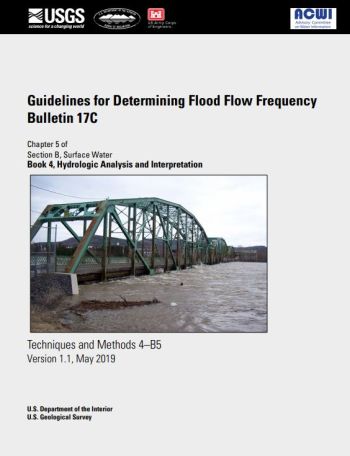Guidelines for Determining Flood Flow Frequency (Bulletin 17C): Difference between revisions
No edit summary |
Rmanwaring (talk | contribs) No edit summary |
||
| Line 15: | Line 15: | ||
|link= | |link= | ||
<!-- Add Url to document below (To retrieve URL from a pdf, add document as a pdf file and copy link address from its page--> | <!-- Add Url to document below (To retrieve URL from a pdf, add document as a pdf file and copy link address from its page--> | ||
https:// | https://damsafetytoolbox.org/images/4/49/B17C.pdf | ||
|abstract= | |abstract= | ||
Revision as of 20:21, 13 December 2022
United States Geological Survey, 2019

These Guidelines describe the data and procedures for computing flood flow frequency where 2 Guidelines for Determining Flood Flow Frequency—Bulletin 17C systematic streamgaging records of sufficient length (at least 10 years, with an informative regional skew and [or] record extension) to warrant statistical analysis are available. The procedures do not cover watersheds where flood flows are appreciably altered by reservoir regulation, watershed changes, or hydrologic nonstationarities, or where the possibility of unusual events, such as dam failures, must be considered.
Federal agencies are requested to use these Guidelines in all planning activities involving water and related land resources. State, local, and private organizations are encouraged to use these Guidelines to assure uniformity in the flood frequency estimates that all agencies concerned with flood risk should use for Federal planning decisions.
Revision ID: 5404
Revision Date: 12/13/2022
